Table of Contents
Seeing What the Hype is All About
Over the last five years, I have traveled around much of the Mountain West – California, Nevada, Utah, Wyoming, Idaho, and Montana. Yet I had never made it out to Colorado. I think the public perception (at least in the majority of the country) of the Mountain West is that Colorado is the peak of the Rockies. True, it does have the highest elevations and biggest ski areas. But ask anyone in the know out West and they will roll their eyes at Colorado, dismissing it as mostly overrated, with the exception of a few pockets like Rocky Mountain National Park or the San Juans. For me, the verdict was still out. Was Colorado worthy of the hype?
Last year, my good friend Jacob moved to Breckenridge in central Summit County, Colorado. Sandwiched between 13 and 14,000 ft peaks, Breckenridge is the highest ski area in the country. He raved to me about the access and spring ski mountaineering. Originally, I planned on visiting him over the Holidays, but that trip fell victim to the massive Southwest meltdown. So we rescheduled for early April, planning on ski mountaineering instead.
The Trip
I flew into Denver and then took one of the convenient commercial shuttles to Breckenridge, where Jacob picked me up. Jacob lives in an uninsulated cabin in Blue River, just down the road from Breck. I quickly got used to living at 40 degrees constantly. The worst part was trying to type on the computer in the morning.
It was cold and snowing when we arrived, so we started out the trip with a short afternoon tour at one of his powder farming spots. Unfortunately, it had just warmed up before, so we found dust on breakable crust. According to Jacob, powder never expires all winter here. He skis low angle powder every day. But I had the great timing of arriving after reliable powder, but before stability for spring lines. Classic!
The state of the snowpack was distressing: 30+ degree slopes on east and north aspects (where there was actually good powder) were off limits because of persistent weak layers. Southern aspects were generally crusty. West aspects were just rocks. The winds in the alpine were decimating. We had to get creative, but we found surprisingly good skiing that weekend farming low angle north facing gullies like the Hoosier Wave. Mt. Helen involved a lot of rocks, but it was cool to ski in the morning and climb fat ice at Lincoln Falls in the afternoon. All in all, a successful first weekend.

The most shocking revelation early on was how isolated the skiable terrain is. First, it does not snow much here (the median maximum snow water equivalent at Hoosier Pass is 16 inches, or similar to Blewett Pass). And in the alpine, almost all of it just blows away. Only certain aspects and protected features are skiable. Most winter tours involve entering a low angle east or north facing glade, farming a few laps, and exiting. It is nearly impossible to link together low angle and moderate zones because that would involve crossing avalanche slopes or slopes with no snow. I would point out large, moderate alpine slopes and Jacob would respond with, “I don’t think there is any snow on that mountain”. He was usually right.
Another storm rolled through early the next week, so we laid low. Good weather was on the horizon, but we began to realize that the persistent weak layers might hang around for the remainder of my time here. So we started strategizing: we looked for the elusive west facing lines that had enough snow to ski, and we combed the avy reports for lines that had already slid.
Quandary Peak is Jacob’s backyard 14er. The east ridge is a mellow, avy safe tour. On the south side is the more impressive Cristo Couloir. We knew that it had slid full length the week before, so once the storm passed, we went for it. The weather was cold, clear, and calm – absolutely perfect. 360 degree summit views were awesome. The snow in the line was variable powder – exceptional for such a big line in Colorado. This was my favorite ski of the trip.
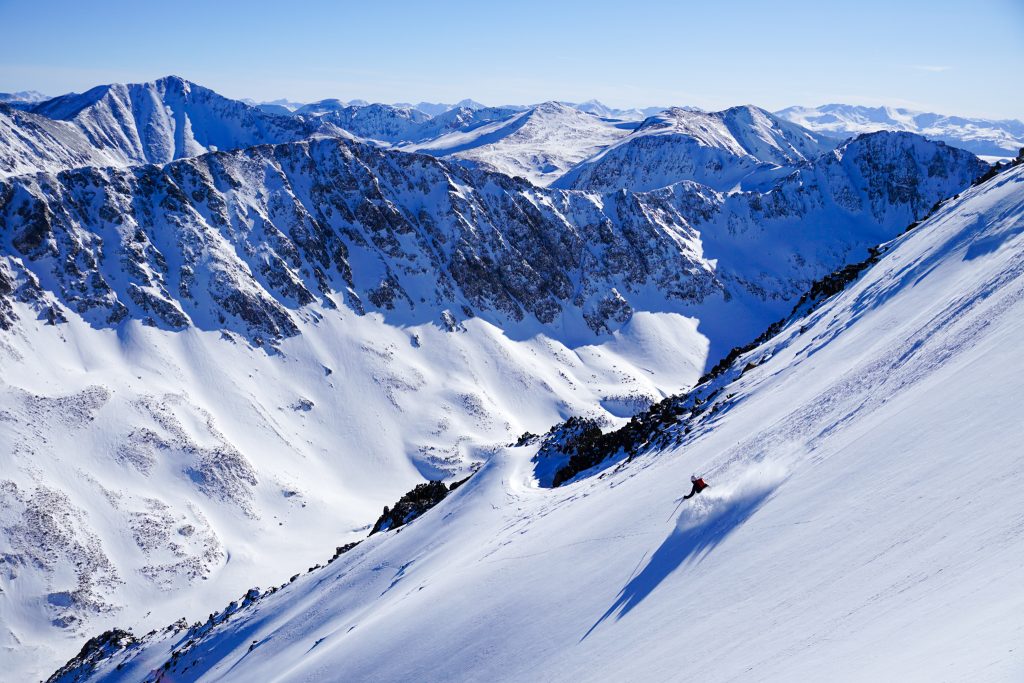
We continued with our strategy of finding safe, big lines. We visited the Loveland Pass area two straight days, skiing the classic west facing line “Shit for Brains” in moguled conditions and experiencing the unique culture of Loveland Pass proper, where tons of shredders car shuttle the backcountry. It was so vastly different culturally than Washington. People were out in the backcountry without skins, a pack, or anything. There were giant kickers everywhere. Apparently people bring giant speakers up for the full moon and throw a big party. I tried to refrain from making judgements – like Europe, this was just a different mountain culture. In a way, the accessibility was uplifting.
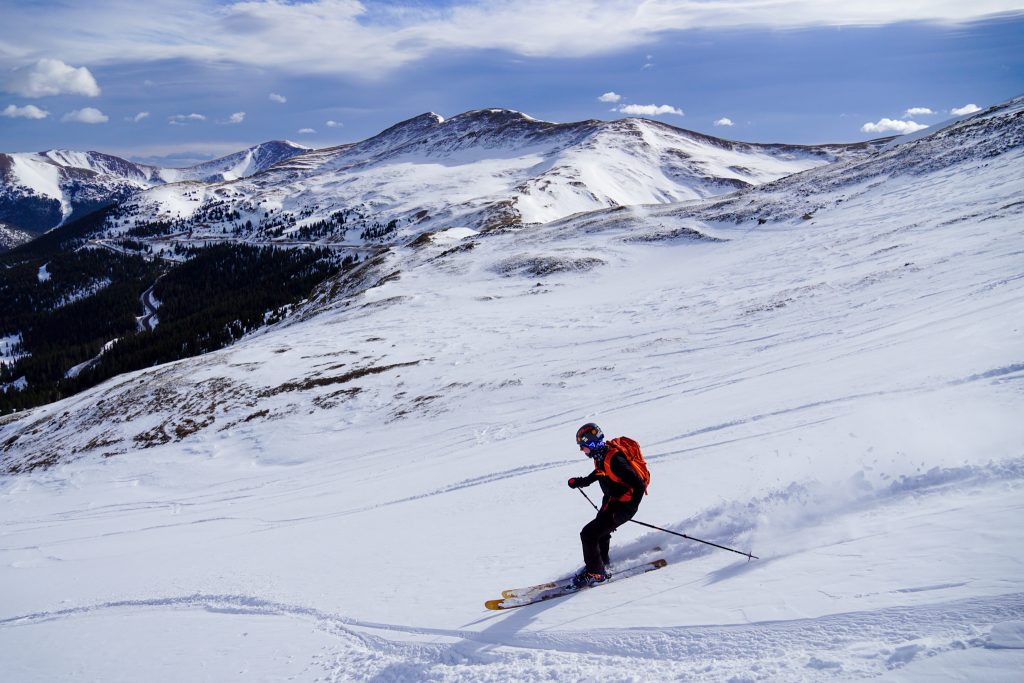
Jacob has wanted to ski a few lines in Rocky Mountain National Park for a while. We read in the avy reports that two major couloirs had slid during the last storm cycle. Rocky is about a 3 hour drive from Breckenridge and we had not driven more than 40 minutes all trip so far. But we did not have many better ideas with the weird snowpack, so we decided to make a day trip since at least we knew that the lines were safe. And I would get to see a national park!
We ended up just skiing the Dragon’s Tail Couloir. The snow was unremarkable but the scenery was excellent. What was remarkable was our encounter with one individual who had no idea what a cornice was, used a string instead of an avalanche beacon, and double ejected down a 45 degree icy couloir. It really highlighted the danger of such good access. People can get into really consequential terrain without the proper gear or knowledge.
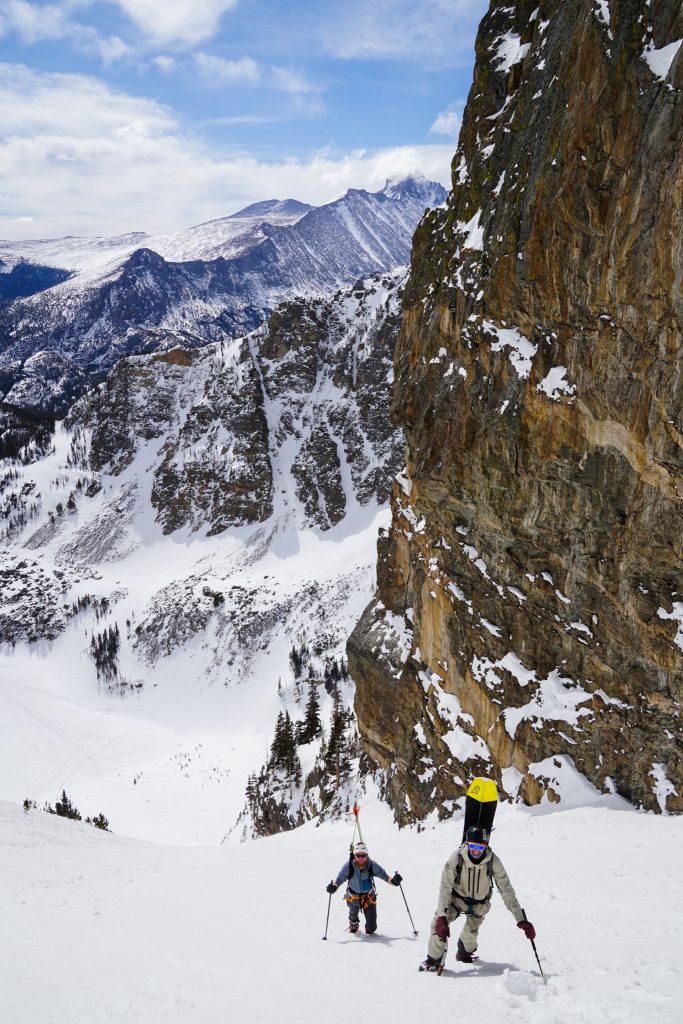
It was warming up drastically for our last few days, complicating plans. The snowpack does not consolidate below treeline all winter, so when it finally warms up, it becomes mush like no other. And the pesky persistent weak layer, although becoming increasingly unlikely, was still on our minds. I got really tired of trying to understand and rationalize the risk of persistent weak layers. As an engineer, I like to think in risk mitigation, probabilities, etc. I just did not have the experience with the snowpack here to make comfortable assessments. Ultimately, we just decided to play it safe.
The Silver Couloir is a proud line visible from the major highways in Summit County. It is also a 50 classic ski descent. I had noticed that it was skied out and so after discussion, Jacob and I felt safe skiing it. I would rather ski moguls than be the first in that line with the uncertainties. The next morning, we went for a lovely dawn patrol of the Silver Couloir. It was a really fun, impressive line – never that gnarly, but awesome the entire way. Initially, I was skeptical, but now I understand its deserved classic status. Unfortunately, I caught a tip near the bottom and crashed, straining my hip flexor and pec. I hobbled out to the car, uncertain how my body would recover.
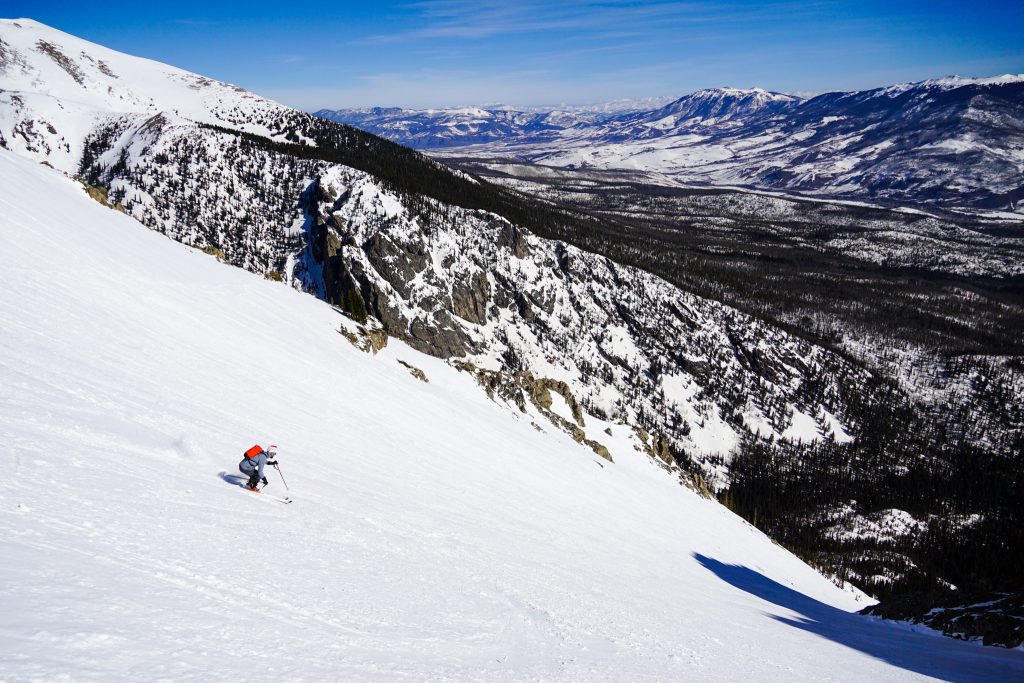
If I was back home, I would have rested for a few days. But the following day was our last chance to ski, so I worked through some pain on a decently long day to ski Mt. Harvard in the Sawatch Range. The views out here were my favorite of the trip and we skied good corn down the south face. The mush we broke trail through at the end felt like Colorado’s way of saying goodbye.

In retrospect, I would call my Colorado trip a definite success. In the moment, it often felt frustrating, but that was only because we had the expectation of skiing the famous north facing lines and such. I arrived probably two weeks too early given the late winter snowpack this year. Thus, we had to manage a challenging, transitioning snowpack. But we both felt like we really made the most of my two weeks there. Most importantly, we had a good time together.
Back when we met at Gonzaga, Jacob was mostly a climber. He pushed me to climb harder on both sport and trad, while I introduced him to fast and light alpine climbing, skiing, and trail running. Now, he is an accomplished mountain runner and ski mountaineer. It was fun to see how he has leaned into this aspects of the mountains and also mentored others. We have both come a long ways since our time in Spokane.
Now that I have covered the day-to-day details, I want to take a step back and offer my opinions about Colorado skiing.
Colorado Impressions
Note that these impressions are primarily focused on the Front Range and Summit County, since I did not visit the Elks, San Juans, or other such ranges.
The Mountains
Colorado has a lot of mountains. There are a bunch of different ranges and I did not see them all. The San Juans seem the most impressive, but I did not get down there. The mountains in the Front Range and Summit County have a reputation of being large choss piles. While that is true, they do constitute an impressive amount of above treeline terrain. The fact they are worn down actually works to a runner’s advantage, because you can link up multiple peaks with no technical sections. I think the mountain running in the fall here would really shine.
To be honest, the mountains here were about what I expected – and I do not mean that as an insult. They are mostly moderate or low angled with modest prominence. Many of them look basically identical. While few peaks in Colorado might match the awe of a Stuart or Shuksan, there is an abundance of fun and adventure to be had in these mountains, particularly because of their accessibility.

The Ski Terrain
I did not know really what to expect with regards to ski terrain. The first thing that caught my eye was the density of trees. True tree skiing is not really a thing in Colorado because the trees are too dense. Fortunately, there are plenty of nice natural glades near treeline that provide good low angle powder skiing.
Because the mountains are rather eroded, there seems to be a lower density of couloirs. Many of their “couloirs”, like Silver Couloir or Emperor Couloir, resemble faces or gullies more than rock-walled couloirs. I do not mean this as a bad thing, as wider lines have the advantage of supporting more ski traffic. And there does seem to be an abundance of easily accessible 3000 foot north facing fall lines. Unfortunately, you can only typically ski them in April and May.
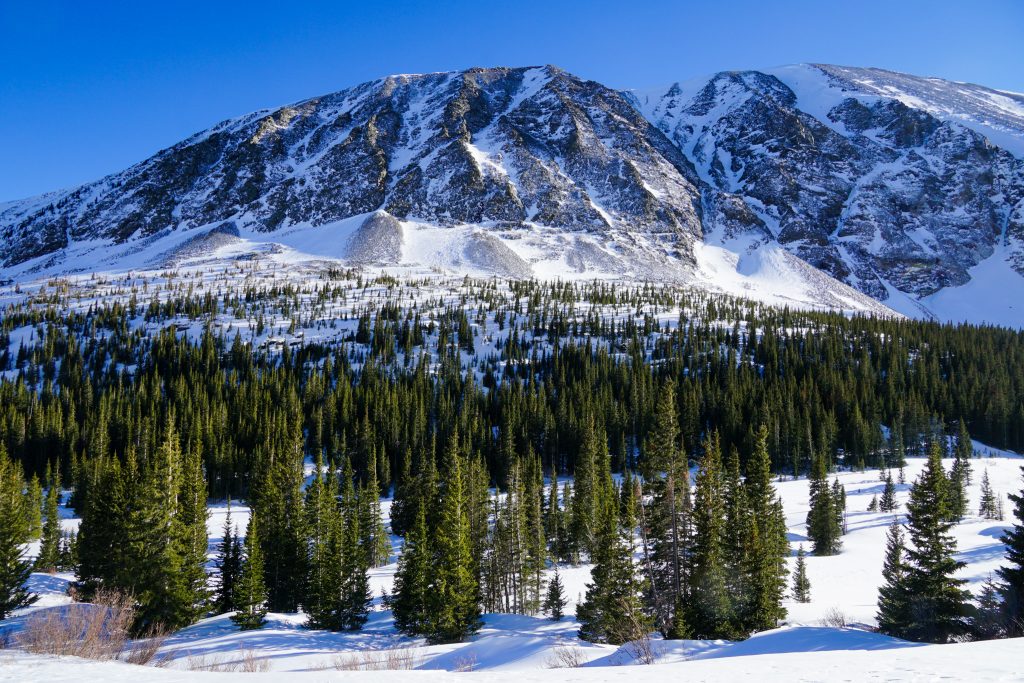
My biggest frustration with the ski terrain was the lack of connectedness. Because so many low, south, west, and north facing alpine slopes simply have no snow, it is challenging to connect different zones. East facing alpine bowls are almost always steep enough to avalanche because of glacial erosion. So until spring stability arrives, it seems that most ski tours consist of just farming powder in some low angle glades until you get bored and leave.
Even in when stability is not great in Washington, you can still have an adventurous tour, linking together different old growth tree zones. It feels like we have more in-between terrain: more interesting than 15 degree glades, but not full-on avalanche terrain. We also have a snowpack that coats every aspect and feature in deep snow. Snowpack and terrain work together.
The Snowpack
I have to say that I am not a big fan of the Colorado snowpack. They just really do not get much snow, even compared to other parts of the Rockies like the Wasatch in Utah. In the alpine, the snow just blows off most aspects. Where it does land, it facets all winter, creating stability issues that usually do not resolve until April. Whereas in Washington, snow coats almost every feature and it is the exception where a line is not skiable, Colorado is the inverse. Most alpine faces are not skiable and it is only in protected features like gullies where there is enough snow to ski.
During the winter, Jacob gets out and skis every day. By his word, he skis powder every day because the snow never warms up enough to crust over. If it gets skied out, then wind just blows in powder the next day. If you want to ski every day, Colorado is a better place than Washington. We can go weeks with bad backcountry conditions, but when it is good, the kind of terrain we can ski in good powder is incredible. At this point in my life, I do not feel the need to ski every day. Instead, I place more value on the less frequent adventure.
Traveling to Colorado really made me appreciate our ability to ski powder on big lines. Even during the rare mid-winter window when it is safe to ski big lines in Colorado, you are likely going to find variable conditions due to the wind. But I can remember dozens of times skiing steep, stable powder in couloirs or alpine faces here in Washington. When I described a typical lap on the Slot Couloir in powder, people in Colorado were shocked. It made me realize that, for all the rain and terrible snow we get, a maritime snowpack does have some good things going for it.

The Access
In many ways, Colorado is the polar opposite of Washington. This is certainly true with access.
Most of our tours were less than a 10 minute drive from Jacob’s house. And yet we started at a different access point every time. Some of them were just small trailheads in neighborhoods, but they were always plowed and always free. Like Europe, the presence of people living in the mountains ensures and subsidizes public access.
Even in the areas where I expected more people, like Loveland Pass or Rocky Mountain National Park on a weekend, finding parking at a reasonable hour (8 am) was trivial. There was no early-bird rush to get parking like in Washington (many of our spots can be parked out by 8 am). Despite such a large population in Denver, it really seemed like there were enough access points; rather the choke point is I70 traffic. If you can get past that I70 traffic, it seems there is a road up every valley, and plowed winter parking at some point. For most of our time there, we did not do a tour longer than 4 hours. With such great access, I found that most objectives were skiable in just a half day, even the bigger lines!
Another thing I noticed was the diversity of people accessing the winter backcountry. As backcountry skiers, we were typically in the minority. There were many people just taking pictures or going for a winter hike (which is possible without flotation due to the windblown, rocky ridges). There were backcountry nordic skiers, snowshoers, and hikers carrying their alpine ski gear into the backcountry. Whereas the winter backcountry in Washington is not very friendly to newer users, the Colorado backcountry is far more accessible. As a result, I think winter recreation is a more ingrained part of their culture. It reminded me of Europe, where mountains are not just for the elite or wealthy; they are an everyman sport.
I asked Jacob if there was a backcountry alliance or organization to advocate for winter backcountry users. He responded no, because there really was not a need. Why would need a special interest group when the Colorado public as a whole is invested in backcountry recreation? Trailheads are plowed, passes kept open. You can get the avy report on the local radio. Obviously, the tourism revenue from ski areas helps, as does a thinner snowpack. But when mountains are a defining feature of a region’s culture, access becomes a public good that must be protected. In Washington, we do have a decently strong mountain culture in the summer, but in the winter only the dedicated venture out. I am not sure that is going to change because of differences in terrain and snowpack, but it makes protecting winter access so much more challenging. Many people would not want it to dramatically change, as there is value in the wilderness Washington has but Colorado lacks. It is always a tradeoff.
As I experienced in the Dragon’s Tail Couloir, there is also a downside to such great access. People can get in over their heads very quickly and put themselves or others at risk. Opponents of expanded winter access in Washington often cite safety as a concern – they do not want more people going into the dangerous mountains. So why should incidents like this concern us? Because it paints a bad image of backcountry recreators at large. As a community, we need to promote responsible recreation to ensure we have the most leverage possible when advocating for access.
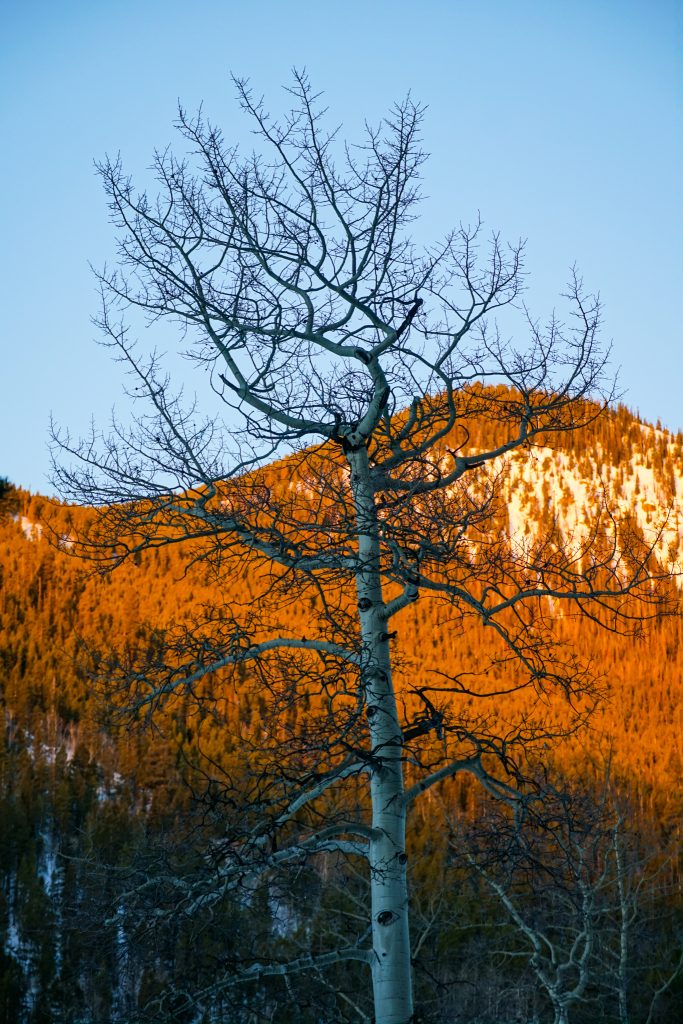
Colorado Mountain Life
I really enjoyed my two weeks in Colorado with Jacob. Thank you to Jacob for hosting me and to his housemate Tommy for letting me stay in his room. Due to Jacob’s future uncertainty, I have no idea when I will return, but I would love to come back during the fall for some leaf peeping and trail running!
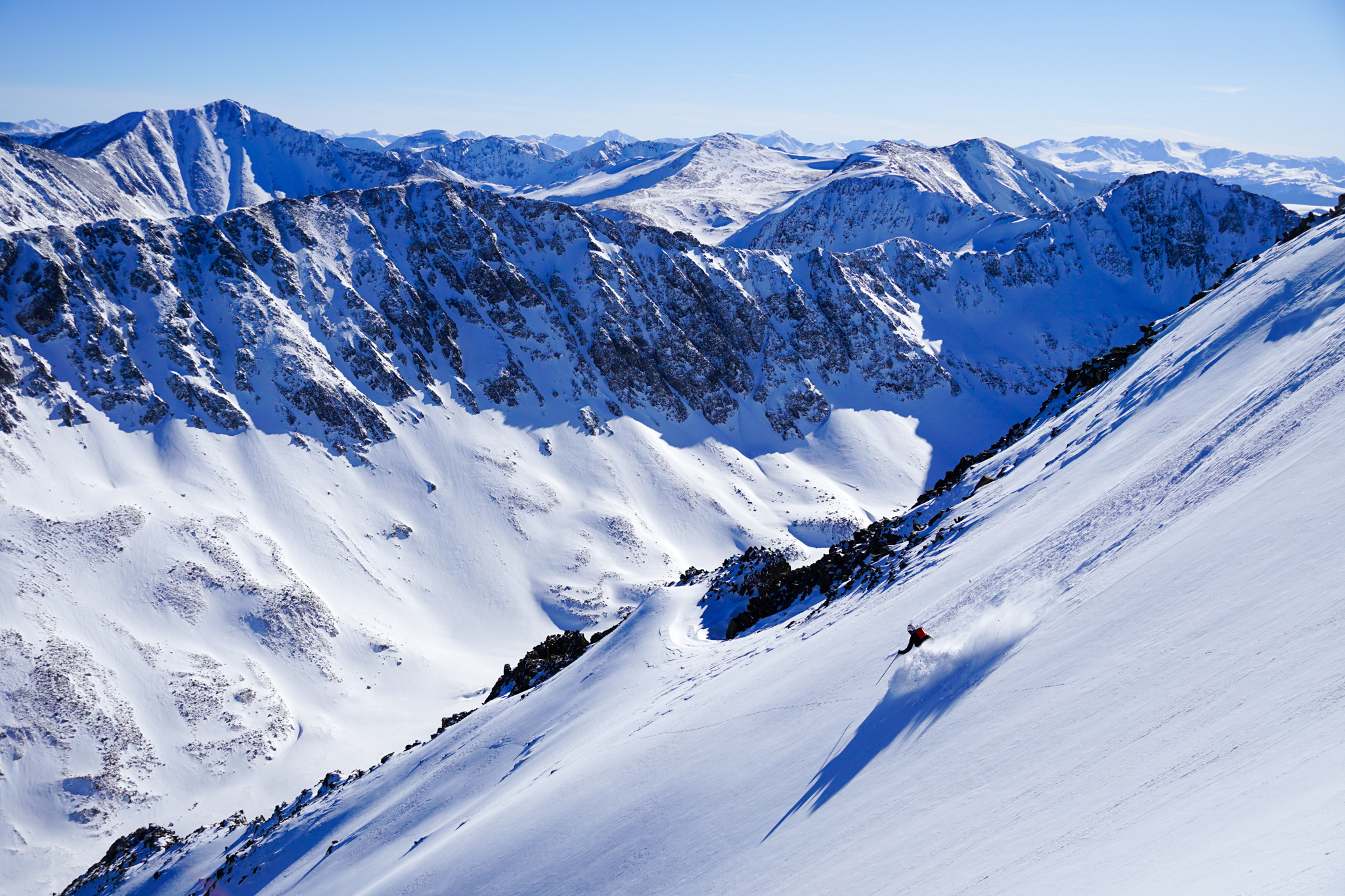
I lived in Summit County for 8 years before relocating to Western Washington. I prefer ski touring here for every consideration you made about Colorado. I’ve ski toured almost everywhere in Colorado and though each region has it’s own unique aspects, they can be generally lumped together. The further you get from Denver, the more tolerable the crowds and culture seem to get… you picked up on it and I think you’re assessment was quite kind. I’ve been fortunate to ski all over the western US (as well as New England) and I’ll fully admit that Washington’s Cascades are consistently my favorite for so many reasons… the snow, the stability, the culture, and the terrain. Though no where is totally perfect, Washington consistently delivers. Toss in volcanoes, and you’re hard-pressed to do a lot better in the lower 48. If you’re goal is quality of experience over number of days/vert (which is my perspective), I’ll take Washington every day… just don’t let the word travel too far about how amazing this place is 🙂
Thanks for weighing in! I wasn’t sure if my assessment was accurate, but good to hear from you. Washington is definitely a place for quality over quantity. Maybe the Wasatch is the best mix of those two.
You’re right the San Juans (and Elks) are way more epic with lots of steep couloirs and overall way more interesting and rugged terrain vs the big humps around Breck and other collegiate and front range peaks. Almost like a certain range in WA…except for the snowpack
Yeah, the San Juans look pretty awesome, too bad they’re hard to get to (or maybe that’s part of their appeal)! I would love to explore that range sometime, along with the Elks.